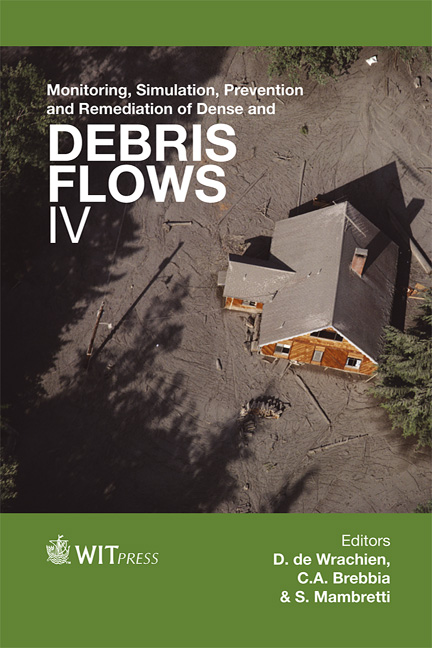Bedload Transport As An Indicator Of Contemporary Transformations Of Arctic Fluvial Systems
Price
Free (open access)
Transaction
Volume
73
Pages
11
Page Range
125 - 135
Published
2012
Size
1,482 kb
Paper DOI
10.2495/DEB120111
Copyright
WIT Press
Author(s)
W. Kociuba, G. Janicki, K. Siwek & A. Gluza
Abstract
The article presents results of measurements of bedload transport rate, performed during the ablation season 2010 in the gravel-bed Scott River catchment (Svalbard). The study revealed temporal and spatial variability of bedload transport rate. It varied from 0.04 10-2 to 1.45 g m−1 s−1 at individual measurement sites. Channel-mean bedload transport rate (qa) amounted to 0.09 g m−1 s−1, and the mean value at individual sites varied from 0.004 to 0.16 g m−1 s−1 for a 24-hour interval. In the period analysed, the river discharged a total of approx. 1834 kg of bedload, with mean daily bedload transport rate (Qb) of approx. 63 kg day-1. The volume and rate of bedload transport were dependent on hydrodynamic conditions and stream regime, directly related to weather. Also the effect of Scott Glacier retreat on discharge rate was emphasised, along with the indicative character of bedload transport rate. It responds to changes in the tempo and magnitude of processes in a glacial catchment quite rapidly, and therefore can be treated as a good indicator of transformations occurring in the arctic zone. Keywords: arctic fluvial system, the Scott River catchment, bedload transport rate, Svalbard. 1 Introduction Bedload transport rate can be an important indicator of contemporary transformations of fluvial catchments of the arctic zone, along with thoroughly researched indicators such as glacier mass balance [e.g. 1–4], water balance [5] or thickness of active permafrost layer [e.g. 6–8]. Scarcity of papers on the
Keywords
arctic fluvial system, the Scott River catchment, bedload transport rate, Svalbard.





